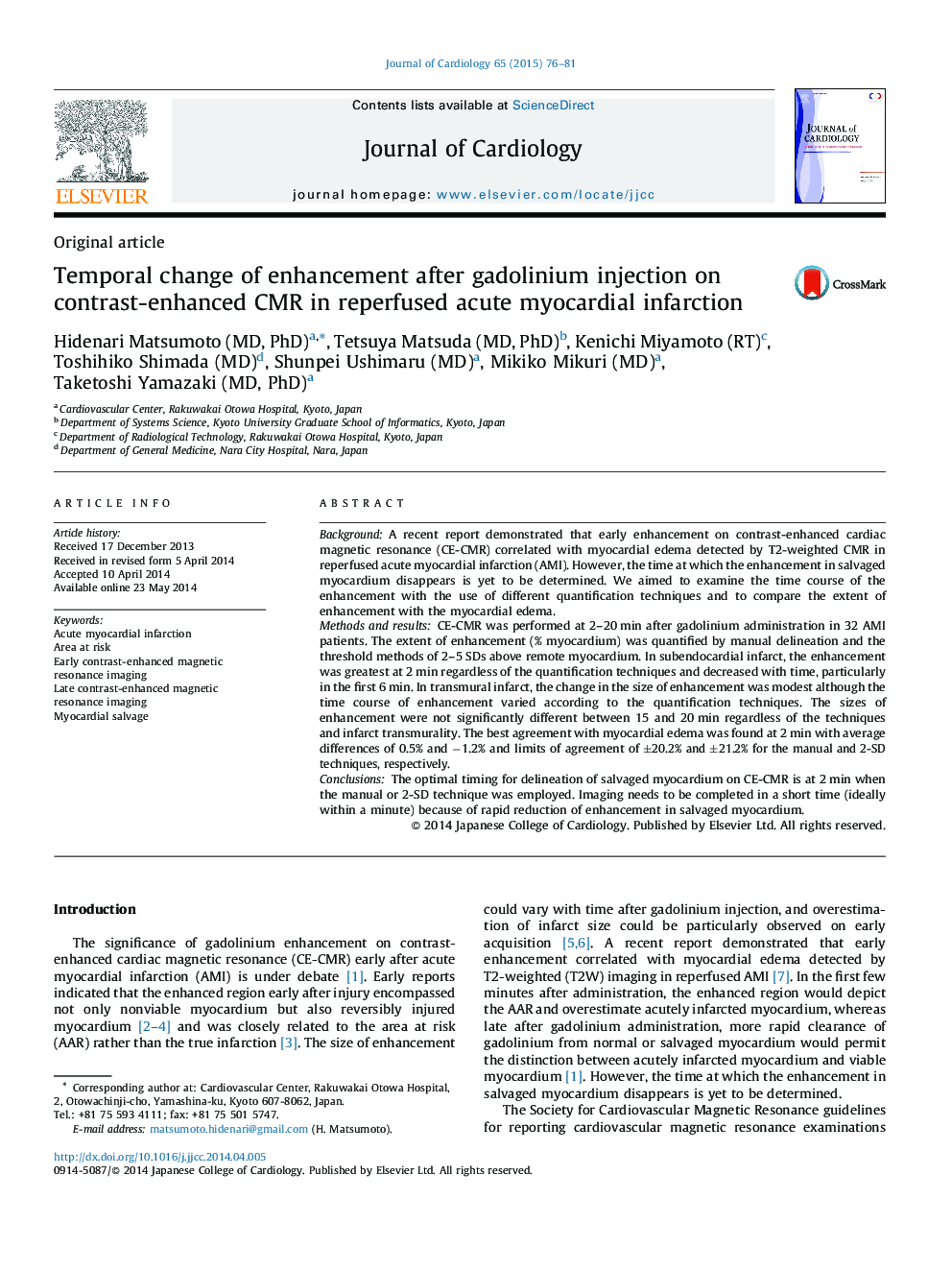| Article ID | Journal | Published Year | Pages | File Type |
|---|---|---|---|---|
| 5984013 | Journal of Cardiology | 2015 | 6 Pages |
BackgroundA recent report demonstrated that early enhancement on contrast-enhanced cardiac magnetic resonance (CE-CMR) correlated with myocardial edema detected by T2-weighted CMR in reperfused acute myocardial infarction (AMI). However, the time at which the enhancement in salvaged myocardium disappears is yet to be determined. We aimed to examine the time course of the enhancement with the use of different quantification techniques and to compare the extent of enhancement with the myocardial edema.Methods and resultsCE-CMR was performed at 2-20 min after gadolinium administration in 32 AMI patients. The extent of enhancement (% myocardium) was quantified by manual delineation and the threshold methods of 2-5 SDs above remote myocardium. In subendocardial infarct, the enhancement was greatest at 2 min regardless of the quantification techniques and decreased with time, particularly in the first 6 min. In transmural infarct, the change in the size of enhancement was modest although the time course of enhancement varied according to the quantification techniques. The sizes of enhancement were not significantly different between 15 and 20 min regardless of the techniques and infarct transmurality. The best agreement with myocardial edema was found at 2 min with average differences of 0.5% and â1.2% and limits of agreement of ±20.2% and ±21.2% for the manual and 2-SD techniques, respectively.ConclusionsThe optimal timing for delineation of salvaged myocardium on CE-CMR is at 2 min when the manual or 2-SD technique was employed. Imaging needs to be completed in a short time (ideally within a minute) because of rapid reduction of enhancement in salvaged myocardium.
